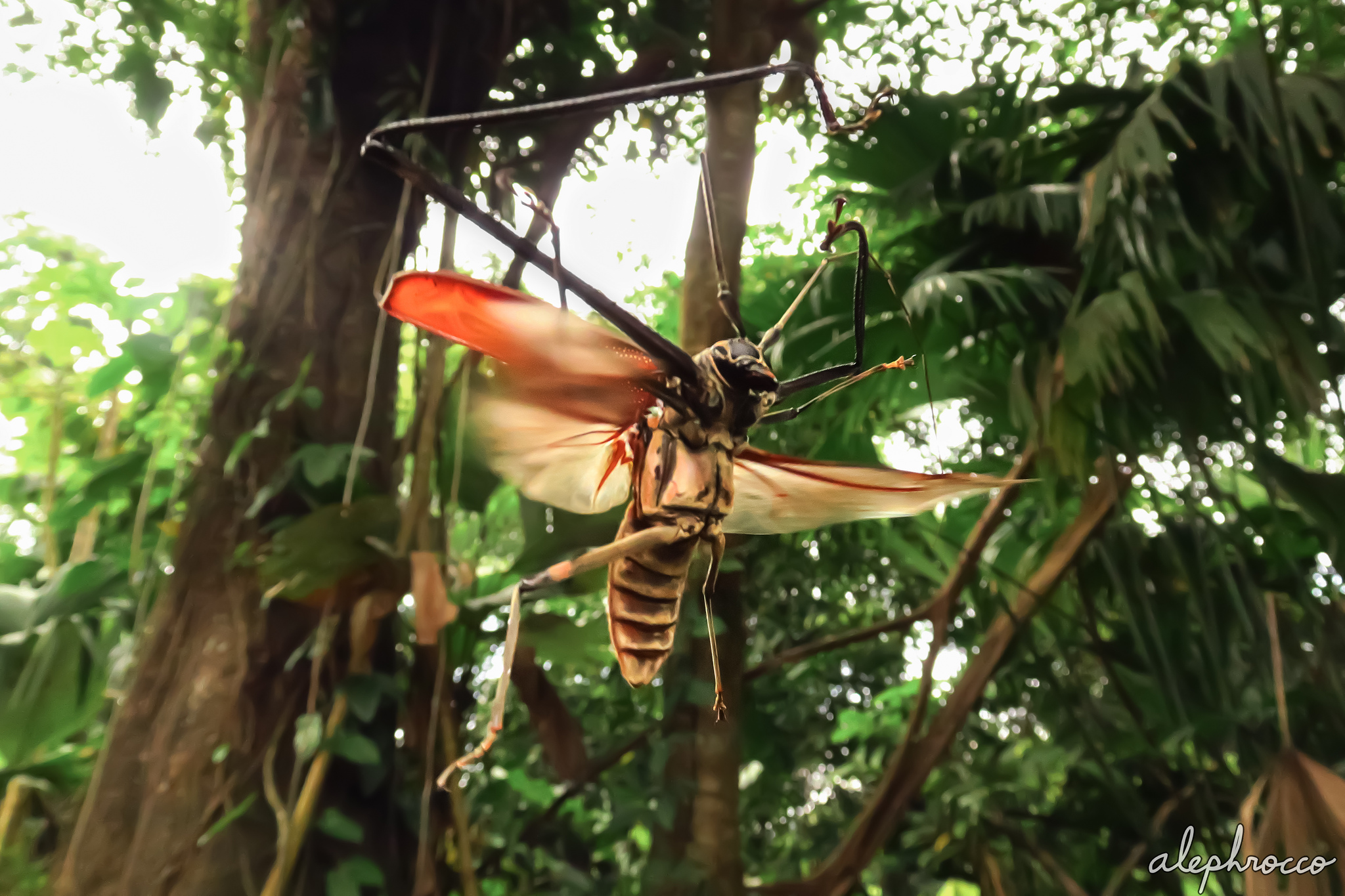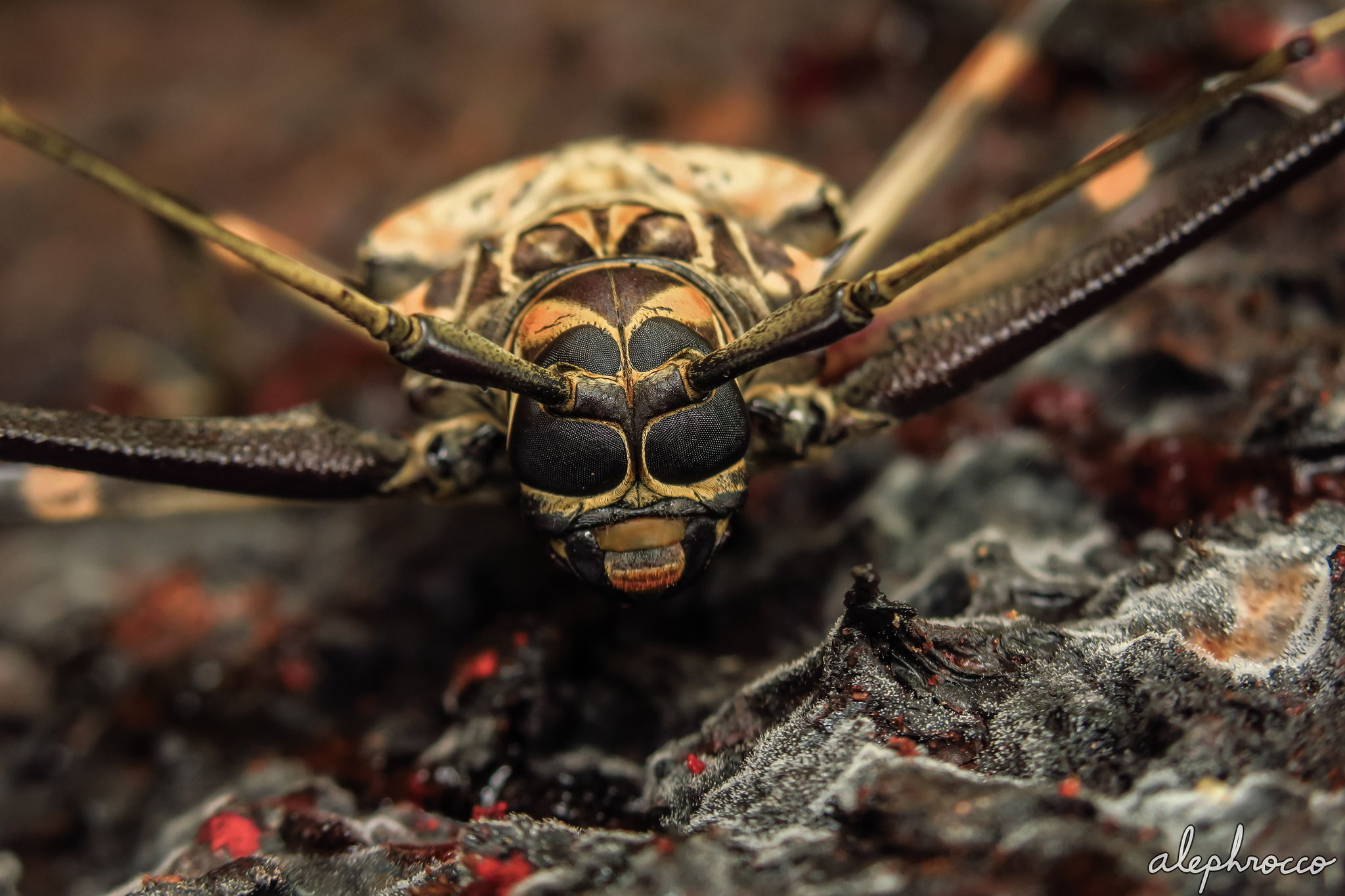
A harlequin beetle (Acrocinus longimanus) elevates into the forest canopy with a superman-like pose. The first time I caught a harlequin beetle I was completely enamored by the way they hold their forelegs forward during flight, and it wasn’t until last year that I had another chance to photograph this species during take-off. Harlequin beetles are among the most distinct beetles in the world. Their elytra (hardened forewings) have a gorgeous mosaic design of black, red, orange, and yellow strokes. To the touch they are smooth and feathery, contrasted with circular pointed protuberances near the scutellum. Some can be brilliant red, but this one had soft pastel colors. The most notable characteristic of harlequin beetles is their elongate forelimbs, about the length of the body in females while substantially greater in males. I am still uncertain about the function of the forelegs, but they have probably undergone sexual selection as weapons in male-male combat, similar to horns in scarab beetles and mandibles in stag beetles.
Like other cerambycids, harlequin beetles are attracted to decaying trees where they will feed on bark, fungi, and sap. They are very talented in detecting the odor of freshly fallen trees, and for this reason I am also attracted to tree falls 🙂 Females will use their short powerful mandibles to carve out an opening in the tree and lay eggs under the bark’s surface. In Texas I saw the entire oviposition process in a cottonwood borer (Plectrodera scalator; see video below). Males also use their mandibles to feed, as well as for maiming other males in combat. I found this beetle with a clipped right antennae, possibly the result of a fight with another male. Harlequin beetles are also famous for carrying commensal pseudoscorpions under their elytra. This beetle was no exception, though unfortunately it’s difficult to manage a good shot of their abdomens uncovered. In fact, every harlequin beetle I’ve encountered so far has had one or two pseudoscorpions concealed beneath their elytra. The pseudoscorpions are considered phoretic because they use harlequin beetles as a transport system to disperse to find new food resources and/or potential mates. These tiny arachnids use their tiny claws to pinch a part of the beetle’s body, eventually climbing between the elytra and abdomen to more securely board the insect aircraft.
When arriving in Costa Rica many years ago, this species along with the giant ceiba borer (Euchroma gigantea), elephant beetle (Megasoma elephas), and the sabertooth longhorn beetle (Macrodontia cervicornis) were like the holy grail of large coleopterans. Maybe during my next trip I’ll be lucky to meet the latter two. I spotted this harlequin beetle resting on a high lamppost in the Atlantic slopes of Costa Rica. Other individuals I’ve seen in situ were resting flat against thick vertical tree trunks in shaded areas of lowland rainforest.
Photographed after capture under controlled conditions [6]



Cerambycid oviposition:
